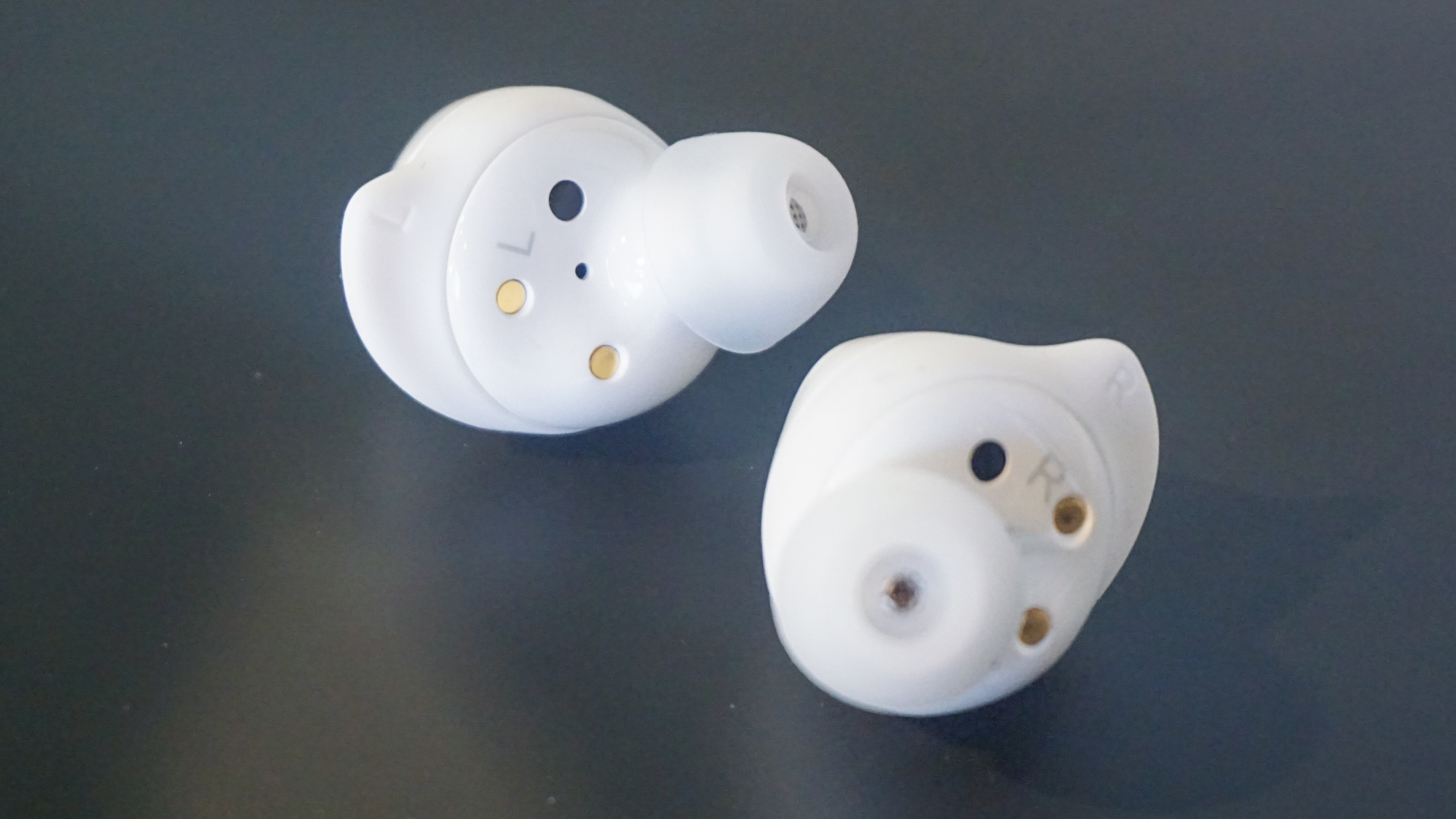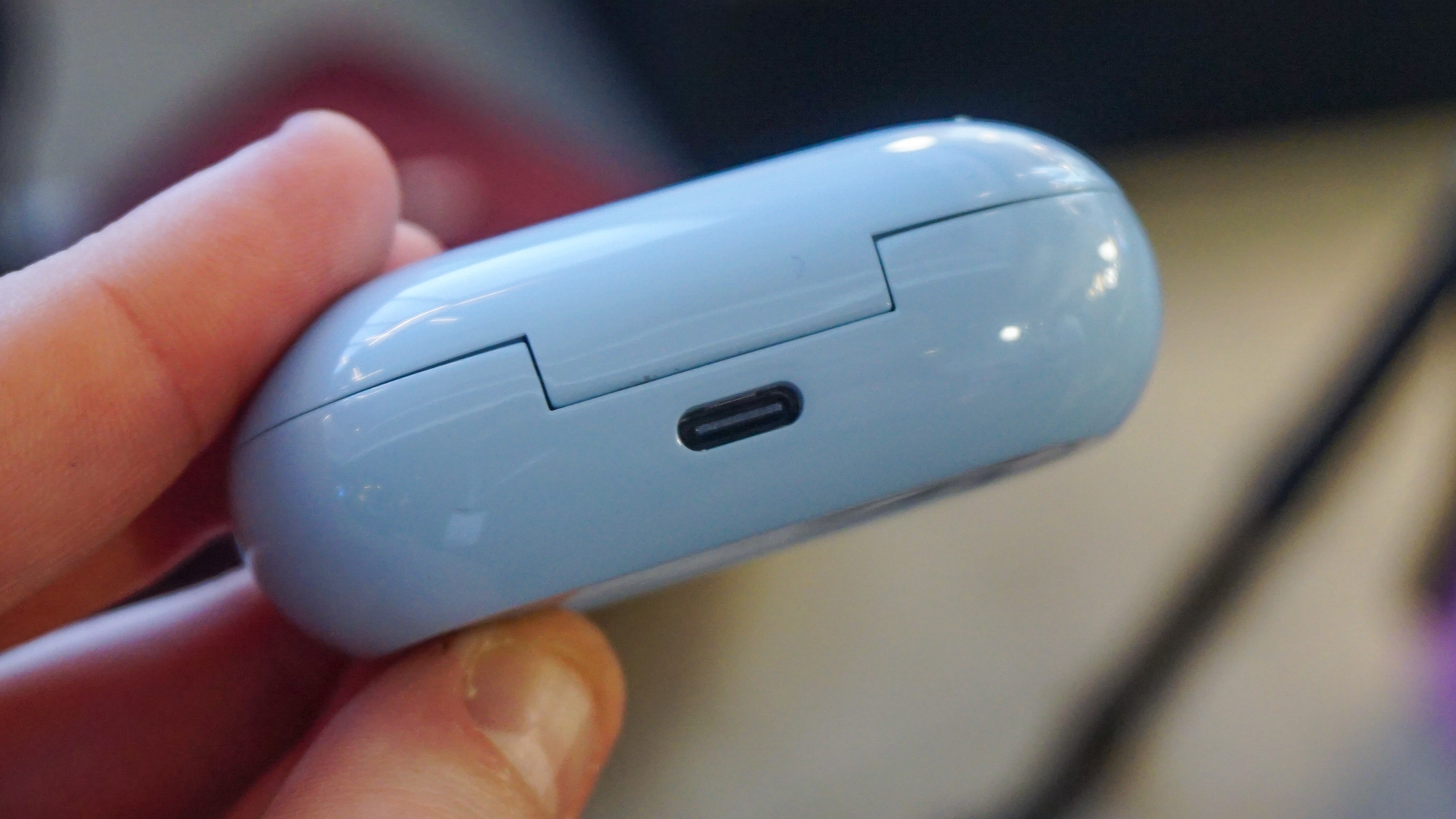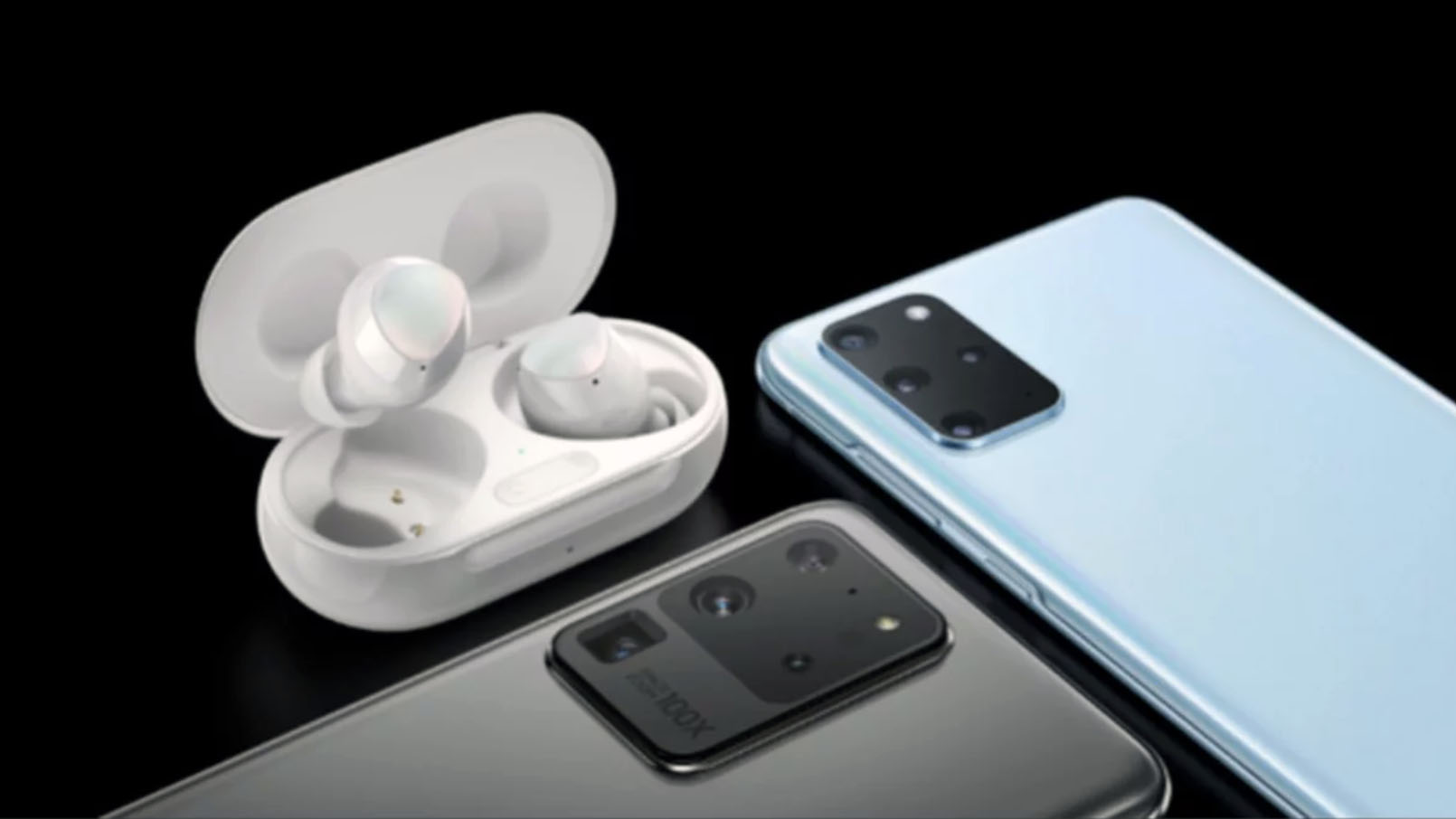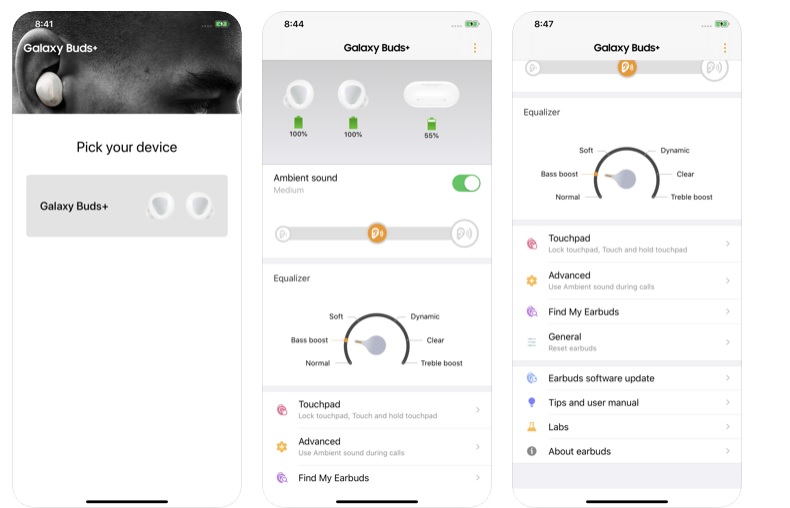The Samsung Galaxy Buds Plus are the update the company's true wireless earbuds (the original Samsung Galaxy Buds) desperately needed: they offer better battery life, improved call audio thanks to a third internal microphone, and a new dual-driver design that uses two powerful drivers for better, clearer sound. On top of that, there's finally support for iOS through the new Samsung Galaxy Buds Plus app.
The downside? The new Samsung Galaxy Buds Plus lack high-end audio codecs and higher IPX4 rating that the Apple AirPods Pro have. That's not even mentioning the fact that they don't offer any form of noise reduction / noise cancellation, nor have a built-in voice assistant like other true wireless earbuds out there.
Not long after the Galaxy Buds Plus' launch, Samsung released its first update, after some users reported hearing the strange sound of white noise while using the true wireless earbuds. According to TizenHelp, the firmware version R175XXUOATB5 is designed to fix this issue, as well as other problems including a "delay in pairing" and Bluetooth dropouts.
In spite of initial teething problems, Samsung should be commended for creating a decent pair of true wireless earbuds in an increasingly competitive landscape. They hold up against rival buds in their own price range and while they don't achieve the same heights as, say, the Sony WF-1000XM3 or AirPods Pro, they're significantly cheaper and offer some nice features for Samsung smartphone owners.
[Update: The Samsung Galaxy Buds 2 – the company's next AirPods-rivaling true wireless earbuds – are apparently launching in July according to a report by SamMobile.
The new earbuds will apparently be known as the Samsung Galaxy Buds Live, hinting that the AirPods-rivals could double up as running headphones – or may try to replicate the soundstage of a live concert.
Rumors of the new Samsung Galaxy Buds have been ramping up in the lead up to the brand’s next Unpacked event, which is expected to take place in August. According to SamMobile, this is when the new Galaxy Buds Live will go on sale, alongside the Galaxy Watch 3 and the Galaxy Note 20 and Galaxy Fold 2.]
Price and availability
Samsung has launched its latest true wireless earbuds, the Samsung Galaxy Buds Plus, at its Unpacked 2020 event in San Francisco, where it announced that they'll be available to buy online from February 14, and in stores from March 6.
At $149.99 / £159 / AU$299, they're about the same price as last year's Samsung Galaxy Buds (depending on your region) and a little cheaper than their biggest competitors, the Apple AirPods. They're also significantly cheaper than the best true wireless earbuds of 2020, the Sony WF-1000XM3, though these buds come with premium features like active noise cancellation.
You can find cheaper true wireless headphones out there – like the JLab Go Air that are just $29 / £29 (about AU$40), for example – but there are also much more expensive earbuds out there like the yet-to-be-released Klipsch T10 that are slated to cost $649 (about £490 / AU$930).
In comparison to the competition and in their value for the money, the Samsung Galaxy Buds Plus are smack-dab in the middle.

Design
The new Galaxy Buds Plus sport a very similar design to their predecessors, with slick pearlescent housings and adjustable silicone eartips. They come in red, white, blue, and black, and you should be able to find a color that suits your sense of style – something that can’t be said for the strictly-white AirPods.
As of March 10, the Galaxy Buds Plus also come in pink – however, that option is only available in South Korea at the time of writing.
Eschewing the long ear stems of the AirPods and the AirPods Pro, these sleek little buds pop neatly into their charging case and into your ear, being held in place by a small nub that catches a fold in your outer ear.
At 17.5 x 22.5 x 19.2mm, they fill up most of the ear canal (which helps them stay in while working out) and protrude slightly out of the ears. Because of that design choice we had issues wearing these earbuds while laying in bed as the constant pressure on the buds from the pillow made them uncomfortable in the ear.
In terms of customization, inside the box you'll find additional eartips in three different sizes, a larger nub to hold the earbuds in place if they're falling out and a rubber ring if you don't want any nub on the outer edges of the buds.

On the outside you'll find the touch capacitive button that understands single, double, triple and long presses. Single, double and triple do what you'd expect them to do and the long press can either activate your virtual assistant, lower the volume or turn on ambient sound amplification.
Using the touch capacitive button as the means to control the earbuds can be slightly uncomfortable at first, as pushing the button pushes the earbuds further into the ear canal, but you'll soon learn to exert less pressure when using it. It would've been nice if Samsung decided to implement an always-listening virtual assistant here, but unfortunately decided not to.
The only other glaring issue we've found so far with the Buds Plus is that they're only IPX2 splash-resistant. That means they're mostly fine for workouts, but won't be the kind of thing you'd want to take with you to the pool or beach, where they could easily get damaged. For comparison the Apple AirPods Pro are IPX4 water-resistant, and while that's not as good as being fully waterproof, it should assuage any fear you have of damaging them at the gym or outside in the rain.
As for the case itself, it's fairly light and smooth with rounded edges. It should fit fairly easily in your pocket and provides an additional charge for the earbuds in between uses. As you'd expect, the charging case uses USB-C, like Samsung's flagship phones, which means you don't need to carry a separate cable.

Battery life and connectivity
The Galaxy Buds Plus boast a far longer battery life than the original Galaxy Buds. The earbuds themselves contain 11 hours of charge, while the charging case provides an additional 11 hours, bringing the total battery life to 22 hours.
That 11-hour battery life is pretty long for earbuds – but for the charging case, it’s not a huge amount of battery. For comparison, the Apple AirPods contain 5 hours in the buds themselves, with an additional 20 provided by the charging case, for 25 hours in total. It's nice to see the Buds Plus with a larger internal battery, but a shame the charging case didn't get something more substantial.
Throughout our week of testing we've only had to charge the earbuds and their case once, and that's with pretty heavy listening (four-plus hours each day) at medium volume. If you need to listen to your music at a higher volume to drown out outside noise, then expect to charge these every few nights.
In terms of wireless connectivity, Bluetooth 5.0 provides a stable wireless connection that never once dropped on us, even in a crowded area. For comparison, the AirPods still only support 4.2, which is pretty old now, but do have the benefit of the H1 Chip that optimizes battery life and sound quality on the earbuds.
Unfortunately, however, neither the Samsung Galaxy Buds Plus nor Apple AirPods Pro support higher-end audio codecs like aptX, aptX Low Latency or, even better, LDAC. For now your only options are SBC and AAC... unless you also use a Samsung smartphone that runs Android 7.0 or later, then you'll also have the option of Samsung's proprietary Scalable Audio codec which offers higher bitrate support and better stability, a handy perk if you've had earbuds drop out on you in the past.
Setting up the earbuds can either be done by pairing via Bluetooth for basic playback or by downloading the Galaxy Wearable or Samsung Galaxy Buds Plus app from the Google Play and Apple App Store. With those you'll be able to customize the headphones and set up ambient noise reduction so it's well worth downloading. We found both of the apps to be fairly intuitive to use, and they offer a few sound tweaking options and ambient noise amplification that we'll get into in a minute.
Finally, the last feature worth pointing out is that if you have multiple devices, the Galaxy Buds Plus support multi-pairing, allowing them to connect to several devices without needing to re-pair them every time you go to use them.

Sound quality
The headline news in the audio department is the new dual-driver system that the Samsung Galaxy Buds Plus use. There's now a woofer and a tweeter to expand the range of the earbuds and lead to an increase in overall clarity.
After spending a lot of time with them we feel like that's definitely the case, and can appreciate the sound Samsung has crafted here that's rich, warm and easy to listen to for an extended period of time.
To achieve that, Samsung's DSP definitely dials back bass and ups the mids and highs - making these great headphones to use when watching YouTube or Netflix around the house and even makes some genres of music sound pretty good. Listening to Green Day's atrocious new album Father of All... was slightly more bearable thanks to the Bud Plus' mid-range musicality, and a tour through Red Hot Chili Peppers' old catalog with these earbuds allowed us to appreciate the interplay between Flea's bass and Frusciante's guitar like never before.
That said, songs that should have phenomenal bass response, like Brass Monkey by Beastie Boys, sound a bit subdued to other earbuds, especially a pair like the Powerbeats Pro that emphasize the low-end.
Using the Samsung Galaxy Buds Plus and/or Samsung Wear app you can customize the sound of the earbuds (there's options for Soft, Dynamic, Clear, Treble and Bass Boost) but there's not a significant difference between them.

While the increased clarity is the highlight of the new design, Samsung says it's also increased the amount of internal microphones by one and that lead to better call quality. That claim held true in our testing as anyone we called with the earbuds reported that they sounded as good as talking directly into the phone's mic.
Having the extra mic also means that ambient noise amplification is better this time around, too. Obviously ambient noise amplification – which pipes in outside noise rather than cancel it out isn't as good as noise reduction or noise cancellation, but it can be helpful at airplane terminals or bus stations when you're waiting for a crucial piece of information over the loud speaker or while riding a bike.
The biggest criticism that we can levy against the Samsung Galaxy Buds Plus is that they don't offer active noise cancellation nor do they provide much in the way of passive noise reduction. That means, if you plan on wearing these out and about, expect to hear a lot of the outside world while listening to your music. That's fine if you're at the gym and don't mind hearing a bit of the background noise or if you're at the office and still want to be able to hear what coworkers are saying nearby, but those looking for total aural isolation will have to look elsewhere.
The good news? If you lose them, you can find them again pretty easily by going into the app and selecting 'Find My Earbuds'. As long as they're still charged, this will get the earbuds to play a chirping sound at increasing volume - which is pretty handy if you're the kind of person who takes out your earbuds and leaves them laying around the house.
Final verdict
So where do the Samsung Galaxy Buds Plus stand in the wide and deep echelon of true wireless earbuds? Well, somewhere in the middle. Thanks to its better battery life of around 11 hours (give or take) per charge, it's a decent pick for people who hate charging their headphones at night. That said, it doesn't feature a built-in virtual assistant nor does it have real water-resistance, it's just IPX2.
Most egregious, however, is its lack of noise cancellation or even noise reduction, a feature that's available on the similarly priced Amazon Echo Buds. Now sure, those may not sound as good as the Galaxy Buds Plus nor do they last as long, but both those features lose their luster when you're struggling to hear your music on a crowded subway train.
At the end of the day, the Samsung Galaxy Buds Plus present a good value for folks who just want true wireless earbuds they don't need to charge everyday. They aren't the best-sounding, but the dual-driver design is a big step up for Samsung, and is good enough for watching videos and listening to bass-lite music.
Ultimately, you'd be better served by saving up for a pair of Apple AirPods Pro if you're an iOS user or a pair of Sony WF-1000XM3 if you use Android, both of which sound better and offer noise cancellation. They don't last as long as the Galaxy Buds Plus do and cost twice as much, but they're a better all-around pick in our opinion.
- Ready to cut the auxiliary cord? Check out our list of the best true wireless earbuds for our up-to-the-minute recommendations
from TechRadar: Technology reviews https://ift.tt/3ghrVXK
No comments:
Post a Comment